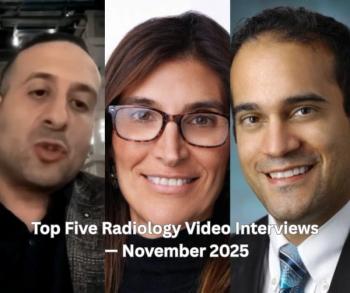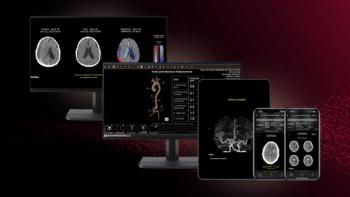
Report from SNM: SPECT/CT cardiac study stands out as image of the year
An image illustrating perfusion SPECT/CT’s importance for assessing low-risk patients with suspected myocardial infarction was selected as image of the year at the 2006 Society of Nuclear meeting in San Diego.
An image illustrating perfusion SPECT/CT's importance for assessing low-risk patients with suspected myocardial infarction was selected as image of the year at the 2006 Society of Nuclear meeting in San Diego.
Dr. Henry Wagner, a professor of nuclear medicine at the Johns Hopkins School of Public Health, selected the image from more than 650 scientific presentations and 900 posters. The image and its associated clinical study led by senior investigator Dr. Phillip Kaufmann of University Hospital Zurich in Switzerland demonstrated that multislice CT alone should not be trusted to triage low-risk patients.
"CT angiography is extremely sensitive, it is just not specific. It can show that people have coronary artery disease when blood flow to the heart is actually okay," Wagner said.
The shortcomings of anatomically based CTA are costly, considering that only 1.3% of the 480,000 chest pain patients annually admitted for an overnight hospital stay have actually experienced myocardial infarction.
Dr. Oliver Gaemperli, a fellow at the University of Zurich, found in study of 62 consecutive patients with suspected CAD that 64-slice CTA generated only a 44% positive predictive value for 75% or greater stenosis on a per-patient basis and a 90% negative predictive value for ruling out significant disease.
The image of the year actually involves three sets of images.
"The information obtained from either SPECT or CT alone can be insufficient to identify the vessel that is responsible for causing ischemia," Gaemperli said.
Results from the Zurich trial correlate well with an Israeli study that reported SPECT and MSCT produced an 83% PPV when performed together. But the PPV was only 27% for significant stenosis on a per-segment basis when CTA was performed alone, Wagner said.
The ability of perfusion SPECT to boost the specificity arose again in a University of Munich trial reported at the SNM conference. Results from 35 patients suggested that 64-slice CTA failed to reliably predict the hemodynamic relevance of coronary artery stenosis in patients with stable angina and confirmed that perfusion SPECT remains mandatory for evaluating the functional relevance of coronary artery lesions, Wagner said.
Newsletter
Stay at the forefront of radiology with the Diagnostic Imaging newsletter, delivering the latest news, clinical insights, and imaging advancements for today’s radiologists.




























